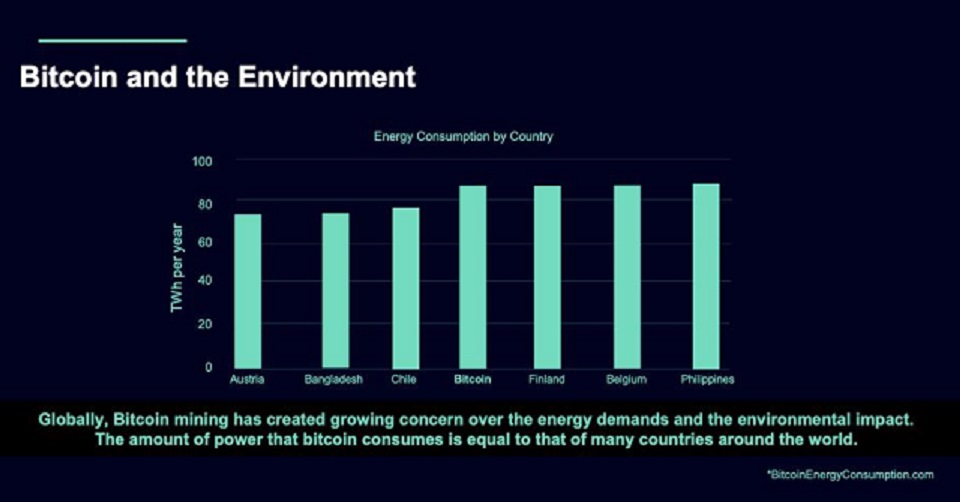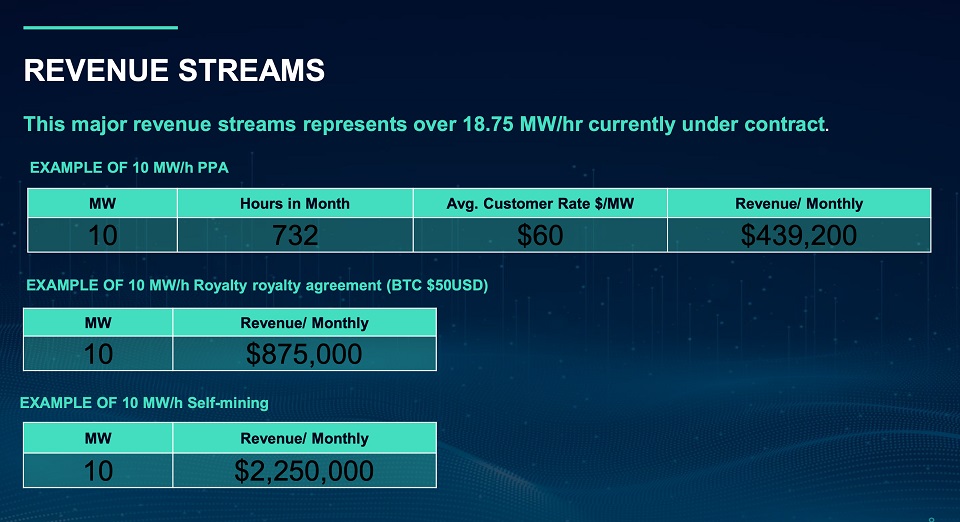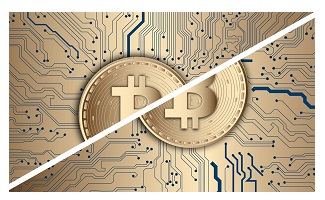More recently, Bitcoin and other cryptocurrencies have been making headlines for different reasons, in part thanks to Tesla (NASDAQ: TSLA) founder and CEO Elon Musk, who on May 12th tweeted that Tesla would no longer be accepting Bitcoin as a form of payment due to its reliance on fossil fuels – particularly coal – prompting a mass sell-off of the cryptocurrency.
Musk was called out as a hypocrite for his comments shortly after the tweet went viral – electric vehicles connect to the power grid to charge their batteries – and the majority of electrical energy supplied by power grids currently comes from fossil fuels, mainly coal.
But Musk isn’t wrong – the Bitcoin mining industry alone currently consumes around 120 TWh (Terawatt hours) per year of energy – in layman’s terms, that’s the equivalent to the annual energy consumption of a small country.
FIGURE 1: Bitcoin and the Environment

Considering that cryptocurrencies are unlikely to disappear any time soon, there is certainly room for improvement in the energy usage department.
One Canadian company is doing just that, while also solving another mounting environmental issue. Link Global Technologies (CSE: LNK |OTC: LGLOF | FSA: LGT) is using trapped methane gas from inactive natural gas wells in Alberta to power Bitcoin mining and data centres.
Currently, there are around 91,000 inactive oil & gas wells in Canada alone, and they pose a big threat to the environment – even when the wells are plugged or capped, and many of them haven’t been, these inactive wells leak harmful methane gas into the surrounding atmosphere.
Methane gas, when released into the environment before it is burned up, traps heat in the atmosphere, meaning it is a big contributor to climate change. In fact, methane’s ability to trap heat is around 84X more potent than CO2 for the first 20 years after it reaches the atmosphere (CO2 stays in the atmosphere much longer than methane).
By accessing this trapped methane gas and safely combusting it, Link is preventing the gas from leaking into the surrounding atmosphere, while also providing a stable and cost-effective new energy source for two very energy-intensive industries – Bitcoin mining and data centres.
eResearch chatted with Link’s President & CEO Steve Jenkins to learn more about the company and this emerging industry.
-
Can you explain what Link does, and how the Company earns revenue?
In short, Link identifies dormant or wasted energy sources – what we call stranded assets – and converts this energy to power. Currently, we are taking trapped and dormant methane gas that’s present in inactive oil wells and converting it to power, which is a very cost-efficient model.
We then sell this power in one-year, fixed-rate PPAs (Power Purchase Agreements) to customers in two very energy-intensive industries that are growing rapidly: cryptocurrency miners and data centres. We are also supplying our customers with infrastructure and servicing for that infrastructure.
-
How is this beneficial to the environment and how does it play into the need to reduce greenhouse gas emissions?
There are many aspects of this model that are beneficial from an environmental standpoint. Flaring from oil wells and methane gas leakage from inactive wells is actually a bigger contributor to climate change in the near term than CO2.
Methane is the lightest of all hydrocarbons and it will otherwise leak out from wells fairly easily.
If methane gas escapes into the environment before it is burned up, it has more than 80 times the warming power of carbon dioxide over the first 20 years after it reaches the atmosphere.
Even though CO2 has a longer-lasting effect, methane sets the pace for warming in the near term. At least 25% of today’s global warming is driven by methane from human actions.
The proper destruction of methane gas is the best way to eliminate its harmful effects on the environment because the safe combustion of methane prevents it from leaking into the environment.
That is what we are doing, but we are using the energy that methane combustion creates to power Bitcoin mining operations – an industry that typically uses up enormous amounts of power. So we are also taking something that’s harmful to the environment and converting it into a new source of energy.
-
You have several revenue streams and you have royalty share agreements with some of your Bitcoin mining clients. Are you earning revenue in both cash and Bitcoin?
Yes, we are earning revenue both in cash and Bitcoin. We’re not a pure Bitcoin play. We’re an infrastructure company ultimately.
Bitcoin mining companies have been hitting gold as its price has risen over the past few years, and we’re a pick-and-shovel model. Some of these guys that are hitting gold now are going to get nailed by the power providers as the prices rise, because power prices do tend to rise over time, and also in cases when demand for power increases, like it is now. We are offering competitive rates on power, but rates that are flexible for us as well because they are sold in one-year fixed contracts.
We’re basically a pick-and-shovel operation in the sense that we supply the miners with the resources they need to mine, but with the opportunity to keep some of the “gold” that’s mined. So in that sense, we’re also a long-term asset play.
-
Can you explain your business model?
The best way to describe it is if you think about us as the owners of a commercial mall, we have three different sources of revenue – one source of revenue would be retail tenants, who pay us rent for the use of a store where they can sell their own goods to customers. That is comparable to our Power Purchasing Agreements, where miners pay us for the power we supply them so they can mine cryptos.
Going back to the mall analogy, another source of income would be a revenue share agreement, where the retail clients give us a portion of the revenue from what they sell at the mall. That is comparable to our Royalty Agreements with clients, where we are earning a portion of the Bitcoin they are mining.
The third source of revenue in the mall analogy is that we run some stores ourselves, and we keep all the money we make from those stores – that is comparable to the self-mining of Bitcoin that we are doing, using our own source of power and our own machines, which is very cost-effective for us.
And because we own this “mall”, we can also offer services to our customers. Fixing mining machines is becoming a big deal, so we are looking at getting into the service side of things in that respect. This industry is evolving daily so more opportunities are coming to light every day.
FIGURE 2: Link Global’s Revenue Streams

-
What kind of margins exist with this model?
The margins vary depending on the price of Bitcoin, which is why we sell our power in one-year, fixed-rate contracts.
In June 2020, Bitcoin’s price was around $9,000, so we’re not going to be offering the same prices on our power that we were back then.
Bitcoin recently touched $63,000. We don’t know – what if Bitcoin is at $200,000 next year? This is why we offer one-year contracts because this allows us to stay flexible and improve our margins over time. It’s a bit like if you were a landlord and you could find new tenants each year that would pay slightly higher rental rates, so you can keep up with inflation and keep making good margins.
Our margins are flexible, and that’s a good thing. If you think of our Power Purchasing Agreements versus our Royalty Agreements – the Royalty Agreements are our best margin. We don’t have to put anything into the machines but we get a portion of the Bitcoin that is mined using them. Moving forward, our goal is to have a blend of income sources that is 40% Royalty Agreements, 40% Self-Mining, and 20% Power Purchase Agreements.
-
Why do cryptocurrency miners and data centres make ideal customers for Link?
It’s an ideal customer-supplier relationship because miners and data centre operations have very predictable power usage needs, which are quite high, and we’re providing very predictable power generation.
-
Is your technology easy to expand to new territories and industries? Are you planning to scale your operations up globally?
Absolutely. The systems are modular and scalable – our technology can be used anywhere in the world where there are dormant energy sources. It can be applied to other dormant energy sources such as a biomass plant that’s not being used, any underutilized power source, for example, a solar wind area with battery storage.
We recently announced a 5 Megawatt partnership with Neptune Digital (TSX-V: NDA | OTC: NPPTF | FSE: 1NW) in which we are focused on mining Bitcoin using renewable energy sources. This will be a hybrid model using multiple energy generation sources, in this case, wind and solar, to power Bitcoin mining.
-
What shifts, if any, are happening in the industry that benefits Link over competitors?
Overall day-to-day frenetic change in the marketplace, and the flexibility we have in our model. We have the flexibility to respond to market conditions and to be responsive to customer needs and our own needs. We can be nimble, and adapt to fluctuating market conditions.
-
On that note, any predictions for Bitcoin?
I think the next few months will be very important for Bitcoin. A lot of stuff is going to start to percolate after governments have been spending so much money on Covid relief efforts.
Visa is getting on board with Bitcoin now, which is a game changer.
I got interested in Bitcoin back in 2015 when it started to bubble – to me, back then it was like reading headlines about PayPal back in its early days. You know, money laundering concerns, Visa and Mastercard said they would never adopt PayPal.
Now, you can use PayPal anywhere in the world. People said at first that PayPal and Bitcoin had a small ecosystem. But the Canadian dollar has a small ecosystem – I can’t walk across the border and spend it, I have to exchange it for US dollars first.
Visa and Mastercard are essentially digital currency. PayPal was probably the first real digital currency. Peter Thiel talked about Bitcoin as “PayPal 2.0”, and I think he was pretty accurate with that statement.
-
You’ve announced new technology that can help miners by improving power efficiency. How can this be applied to bitcoin mining and how big is that opportunity?
Crypto mining is still a fairly immature industry – so we’re focused on creating the most powerful miners with thought to how the process can be more efficient.
So we are asking ourselves if our mining farms can operate at a more efficient level as we increase their capacity. Anything that has a microchip has a need for direct current.
Telephone companies run mostly on 40 volt DC. There is a ridiculous amount of energy wasted and a real need to optimize. If you can optimize energy efficiency by 25%, that’s pretty good.
For example, if you think about a power supply unit – it turns alternating current (AC) to direct current (DC) – that is 90-93% efficient. Just by removing this unit, you’re going to save 7-10%. So it’s these kinds of options we are exploring.
-
Have any governmental or environmental bodies shown interest in working with Link?
We’re getting interest from governments and environmental bodies, and private companies, even some of the generator companies. We’re getting interest from these organizations but you will have to keep an eye on our press releases for official announcements.
-
What other stranded assets can Link tap into, and if this is a plan for the future, how would that work?
We are always open to new energy assets. Any underutilized assets where energy is being wasted, we can turn that into power.
If you think about where we operate, which is in remote areas like the oil fields of Alberta. We’re not setting up in the middle of the city because demand for energy is high and supply is limited. So we’re always going to seek out stranded, underutilized assets – it could be a biomass plant that people are living near, and the energy that’s escaping from it could be used to power their homes. It could be a geothermal energy source that is otherwise wasted – we can take that source of energy and put it to use.
We’re not interested in diesel – we’re only interested in natural gas assets because they’ve been in use and have become dormant, so now it’s a liability. So we can take the methane that otherwise escapes into the atmosphere and use it to power another industry that uses up enormous amounts of power.
-
Are there any additional technologies or products you are working on implementing as you grow?
Because we have such a great base load from data centres, which produce heat, we’re looking into agriculture.
There are byproducts of our use of energy that we could apply elsewhere. All electricity is thermal in the end. It’s a measure of heat. Computers are running at 3,200 watts, so each is like 2 hairdryers – what are you going to do with all that heat? Gas generators are 40% efficient, so you have 60% energy that’s being rejected. How can you reuse that heat? We’ve been very busy in that sense. The 60% that’s rejected, if it’s heat – it’s just lost. If you’re losing heat you’ve also got CO2 emissions.
If you look at generators, there are tri-gen and quad-gen – you add a water jacket so you get the heat, you can use it in a hydronic way, you can take the emissions, scrub them and use them in a greenhouse to increase productivity. The carbon capture business – it’s an incremental improvement in the efficiency and the use of the energy. Carbon is only there because of the rejected energy. Carbon is only there because of the energy you emit that isn’t used.
-
Can your method of power generation be applied to other industries besides crypto mining and data centres?
Bitcoin mining uses more power per year than all of Argentina – and any time we’re saving energy we’re also saving money.
Data centres use 5 times the energy Bitcoin miners do. We don’t use water ourselves, we do ambient cooling. It is actually very similar to physical mining. You’re mining digital gold – just like when you’re mining minerals from the ground, there is a lot of water that gets used in the process, and much the same as with mineral mining, with Bitcoin mining you need to figure out what to do with the water that is used for cooling.
-
You recently announced a partnership with BIT Digital Inc. (NASDAQ: BTBT) and Neptune Digital (TSX-V: NDA |OTC: NPPTF | FSE: 1NW), can you elaborate on these?
They’re both focused on crypto mining – BIT Digital has machines worldwide. We provide both of them with lower-cost energy, and we share in the net revenue in Bitcoin, paid to us in Bitcoin.
-
How does the Bitcoin revenue show up in your financials?
It’s very transparent. Say you have 1,000 machines that mine 1 Bitcoin a day. If the power cost is X, our net earnings of Bitcoin royalties are in there.
Let’s say we take 10% as a royalty. The earnings are known, communicable, and transparent. So for our earnings, we have a power cost, and we get a net revenue, and we get a share of that. That model is creating revenue for us every day.
As a comparable, we have 20 Megawatts of available power now. Hive Blockchain just bought 25 Megawatts of power for $25 million – and they still have to make it operational. We’ve got the power operational already. And we’re working on a bootstrap budget.
-
What are the future implications for Link?
I think the market has been very frothy. There are going to be headwinds for Bitcoin mining – people are starting to pay attention to how much energy it uses, as they should. We’re leading the way on what’s possible for energy reduction and the introduction of renewables into the Bitcoin mining space.
-
What else do investors need to know about Link, what’s in store for the Company in the future?
This is a rapidly changing marketplace. The approaches that were used two months ago may not apply today, or tomorrow. Unless you are hyper-focused it is hard to stay responsive to all the changing elements of this business – you have to respond ahead of time. When Bitcoin was at $4,650 – there were not many miners at that price. We were basically a startup in June last year. Our approach will be one where we take incremental steps so we are flexible.
The goal is to be at 100 Megawatts of operational power by 2021. That’s my goal. Re-use and re-tooling energy. Using the law of diminishing returns – so for example, growing tomatoes in a greenhouse in Alberta beside a Bitcoin mining facility, or heating a home with otherwise wasted energy.
Notes: All numbers in USD unless otherwise stated. The author of this report, and employees, consultants, and family of eResearch may own stock positions in companies mentioned in this article and may have been paid by a company mentioned in the article or research report. eResearch offers no representations or warranties that any of the information contained in this article is accurate or complete. Articles on eresearch.com are provided for general informational purposes only and do not constitute financial, investment, tax, legal, or accounting advice nor does it constitute an offer or solicitation to buy or sell any securities referred to. Individual circumstances and current events are critical to sound investment planning; anyone wishing to act on this information should consult with a financial advisor. The article may contain “forward-looking statements” within the meaning of applicable securities legislation. Forward-looking statements are based on the opinions and assumptions of the Company’s management as of the date made. They are inherently susceptible to uncertainty and other factors that could cause actual events/results to differ materially from these forward-looking statements. Additional risks and uncertainties, including those that the Company does not know about now or that it currently deems immaterial, may also adversely affect the Company’s business or any investment therein. Any projections given are principally intended for use as objectives and are not intended, and should not be taken, as assurances that the projected results will be obtained by the Company. The assumptions used may not prove to be accurate and a potential decline in the Company’s financial condition or results of operations may negatively impact the value of its securities. Please read eResearch’s full disclaimer.




